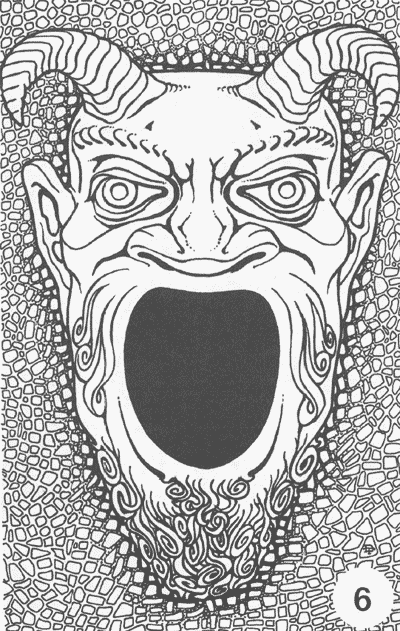
I seem to be on about a lot of “difficult” challenges these days. This post keys off of my last one and also this post by veteran RPG designer John Wick, wherein he rants against the Tomb of Horrors, an old-school D&D module and infamous deathtrap dungeon.
I talked in my last post about the goals of play, and how the Meat Circus in Psychonauts and the Tower of Sarek in Trine both suffer from suddenly changing the goals of play in the 11th hour. John Wick’s experience with the Tomb of Horrors shows a similar thing – a group not interested in Challenge play was forced to endure something focused around it, failed, and got angry, because that wasn’t what they signed up to play. Wick’s perspective on ToH being awful is muddied by not being able to appreciate different goals to play, and much of the internet commentary on the article shows that under a different set of goals, the adventure plays very well. You just have to presume, Super Meat Boy-like, that you will die, over and over again.
That’s all introduction, because what I really want to talk about is a small aspect of the ToH module, the one that killed John’s happy fun times the hardest, the demon head with the sphere of annihilation inside. I want to talk about what makes it a good trap, and what makes it a frustrating trap, and how both groups that John played with went awry with it (and why it was designed so that you would!)
If you don’t already know it, John gives an adequately consternated perspective on the trap:
They went down the long corridor, read the useless riddle on the floor, cautiously avoided all the pit traps and made it to the end of the corridor where they found a misty archway and a green devil’s face. The devil’s face has an open mouth just big enough for someone to fit inside. The booklet told me to say that. Told me to encourage players to climb in.
Problem is, that devil’s face is an instant kill. That’s right. No saving throw, no hit point loss, nothing. You’re character’s dead. You’re welcome.
…
One of my players had his character crawl into the mouth. The actual text from the adventure:
The mouth of the green devil’s face is the equivalent of a fixed sphere of annihilation. Anyone who passes through the devil’s mouth appears to simply vanish into the darkness but they are completely destroyed with no chance to resist.
After he went into the mouth, I said, “He vanishes.” That’s it. I said nothing else. Because that’s what the adventure encouraged me to do.
Then, one by one, my players each had their characters climb into the green devil’s face. And one by one, their characters were irrevocably killed.
None of that is inaccurate. Later, a second group dies basically the same way. Clearly, the trap was designed to do this. Rather than simply bemoan instant kills, though, this makes me wonder about the intent of the trap, and about information asymmetry.
Information asymmetry – or knowing something that someone else doesn’t know – is a key feature of tabletop RPG play that other mediums of gameplay often struggle with. You can’t have secret information on a 4-way splitscreen, and directly competitive games regard most information asymmetry as a taboo advantage to one side (imagine a game of basketball where one team didn’t know the rules before play began). , and a key part of the traps and tricks that DMs can pull. A core presumption of the genre is that the DM knows things that you don’t know. But that can be expressed in different play goals.
In Challenge mode, that information asymmetry becomes the core thing you need to overcome. Gameplay in ToH is mostly about carefully dismantling that information asymmetry, as cautiously as you’d remove a Jenga block or control your hand in Operation. The Tomb of Horrors is much more like those games than it is like, say, Planescape: Torment. It expects you to use all the not-inconsiderable resources of a fairly high level D&D party, or to die.
Looking at it through that lens, the trap becomes clear. You aren’t meant to be able to figure out what happens just by throwing something (or someone) in the hole. Use some lateral thinking and suspect everything of being hazardous and you can succeed. It also becomes clear that the groups John Wick played in didn’t approach the game with the goal of dismantling information asymmetry. Their reaction when given an open mouth you could crawl into was to jump in and explore it – they wanted to visit fantastic locales and find magic and treasure and generally ping on the Explorer quadrant. They didn’t view it as a challenge of discovering what they didn’t know, but as a sandbox they could play in and enjoy.
If they DID approach it with that goal in mind, they’d be using different strategies. Like, when faced with a dark place you can fit into, you might crawl into it…but before you did, you’d stick a pole in the darkness and waggle it around, or you’d cast magic to see what lay beyond, or you’d do what John’s rogue did in the second run – look for traps everywhere. And they’d probably STILL die. That’s the challenging play.
I don’t know if I’d run ToH today myself. These days, that kind of challenge is not what most people play D&D for. But it’s made me think about information asymmetry, the uniqueness of that to this venue, about the many tools in D&D for removing that (the much-maligned divination spells), and about maybe how to get a bit more mileage out of making my players work for things that they don’t know.
Given that I’m writing an adventure about illusions, that’s pretty appropriate!